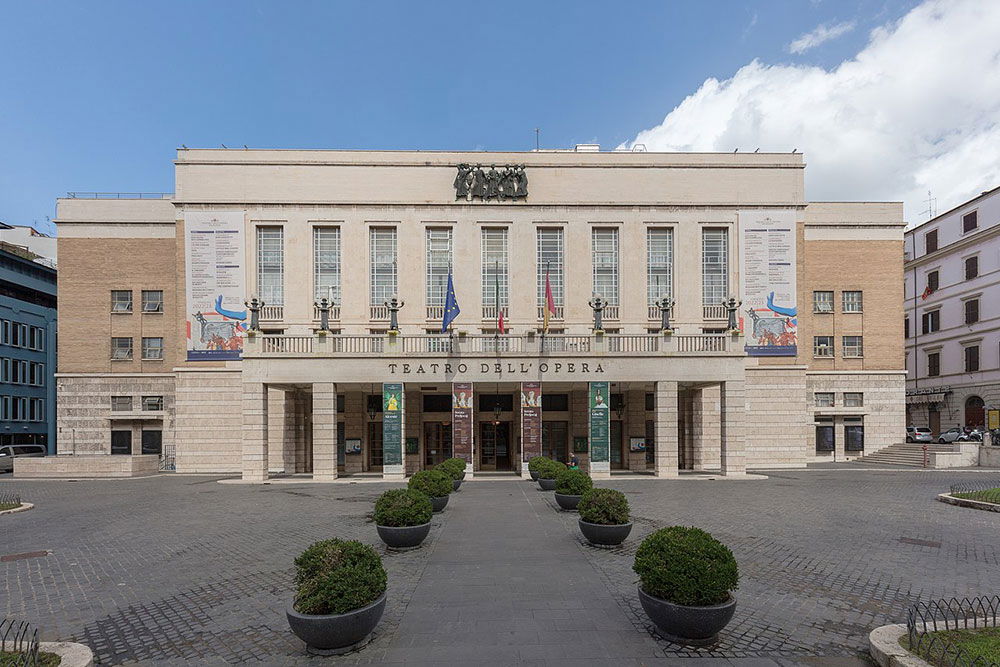
In the very heart of the Eternal City, where every stone tells a story and every street echoes with centuries of history, stands one of Rome’s most treasured cultural institutions: the Teatro dell’Opera di Roma. With its grand interiors, illustrious legacy, and a calendar brimming with world-class performances, this opera house has enchanted generations of music and ballet lovers since the 19th century.
The Teatro dell’Opera di Roma, originally known as the Teatro Costanzi, was inaugurated on November 27, 1880. It was the brainchild of Domenico Costanzi, a prominent businessman with a deep passion for the performing arts. Designed by architect Achille Sfondrini, the theatre was built in a record 18 months and quickly became a cultural beacon in the capital.
Initially, it was a private venture with only 2,212 seats, yet it was lauded for its exceptional acoustics and stylish horseshoe-shaped auditorium. Over the years, the theatre changed hands and names, eventually becoming Teatro Reale dell’Opera during the monarchy, and then acquiring its current name after the fall of the monarchy in 1946.
The architecture of the theatre reflects a blend of neoclassical elegance and 19th-century Italian flair. Its red and gold interior, majestic chandeliers, velvet seats, and intricate stucco work all contribute to an ambiance of old-world grandeur. Several renovations have helped maintain and modernize the space, most notably a 1926 restoration under the Fascist regime and a comprehensive update in the 1950s, when Rome hosted the Olympics.
In 2000, the theatre underwent another significant overhaul to improve stage technology, lighting, and acoustics, bringing it up to the highest international standards without sacrificing its historic charm.
The Teatro dell’Opera di Roma has been a prestigious stage for world-famous composers, conductors, and singers. Legendary performances have included works by Verdi, Puccini, Rossini, and Mozart, with interpretations that continue to draw critical acclaim.
Notably, the opera house hosted the premiere of Puccini’s Tosca in 1900, an event that sealed its reputation as a leader in Italian opera. Renowned conductors such as Arturo Toscanini, Riccardo Muti, and Antonio Pappano have graced its podium, while iconic singers like Maria Callas, Luciano Pavarotti, and Plácido Domingo have electrified its stage.
In addition to opera, the theatre is also the home of the Rome Opera Ballet, one of Italy’s most respected ballet companies. The house regularly stages classical works like Swan Lake and Giselle, as well as contemporary creations by choreographers from around the world.
The Teatro dell’Opera is also known for innovative productions, often collaborating with artists, film directors, and designers to bring fresh perspectives to traditional works. Visionary directors like Franco Zeffirelli and Robert Wilson have introduced groundbreaking interpretations that merge music with avant-garde visual storytelling.
One of the most unique features of the Teatro dell’Opera is its open-air summer season, held at the stunning ruins of the Baths of Caracalla. This ancient Roman site, with its towering walls and moonlit skies, provides an awe-inspiring backdrop for opera and ballet performances under the stars.
It’s an unmissable experience, blending music, history, and nature in a way that only Rome can offer.
Located near Piazza della Repubblica, the Teatro dell’Opera is easy to reach by public transportation and is surrounded by cafés, restaurants, and historic sites. Visitors can attend a performance, take a guided tour of the building, or simply admire its façade and legacy.
The theatre is known for its affordable ticketing policies, designed to encourage wider access to the arts, and often includes youth programs, student discounts, and educational initiatives.
The Teatro dell’Opera di Roma stands not only as a testament to the glory of Italian opera but as a living, evolving institution that bridges past and future. It plays a central role in preserving Italy’s musical heritage while embracing new talent and international collaboration.
Under current artistic leadership, the theatre continues to expand its reach through digital performances, global partnerships, and an emphasis on nurturing young artists. Its mission remains clear: to celebrate the enduring power of music, dance, and theatre in the cultural life of Rome and the world.

More Details